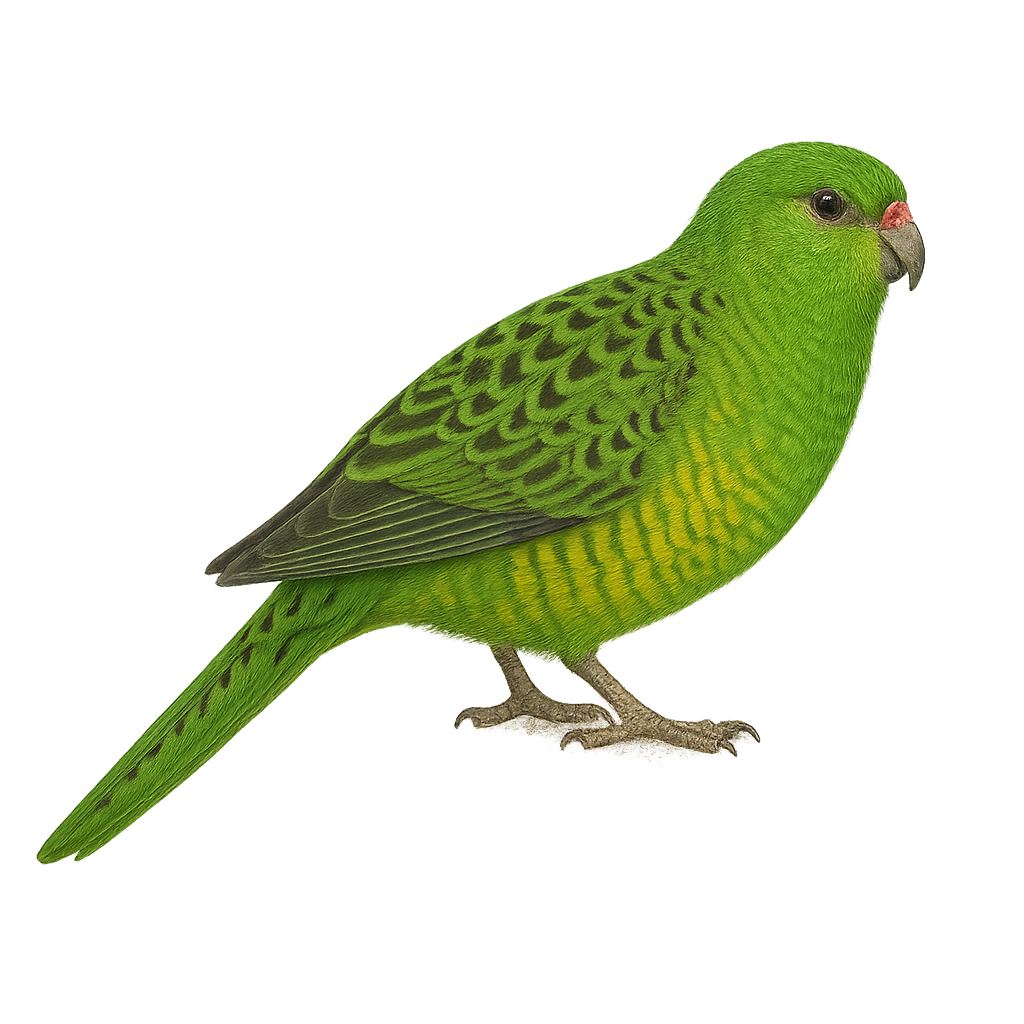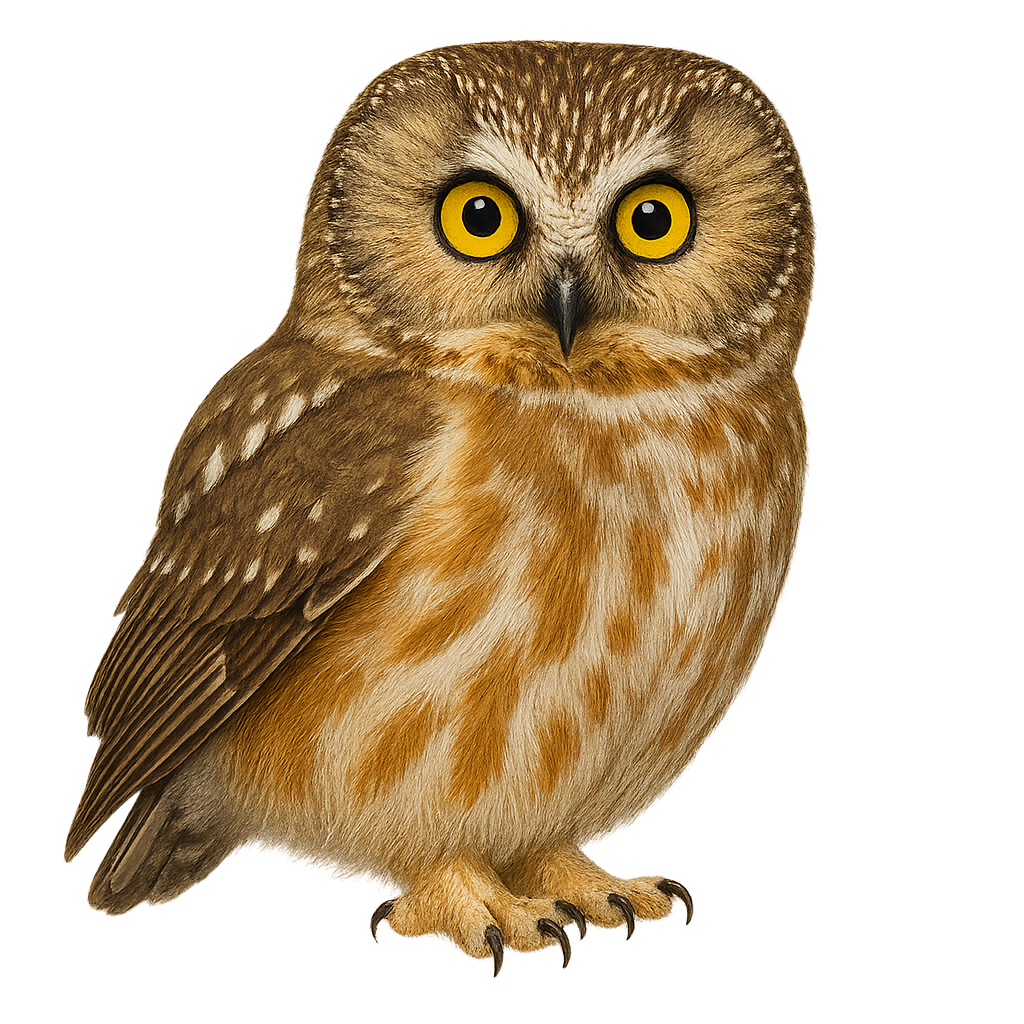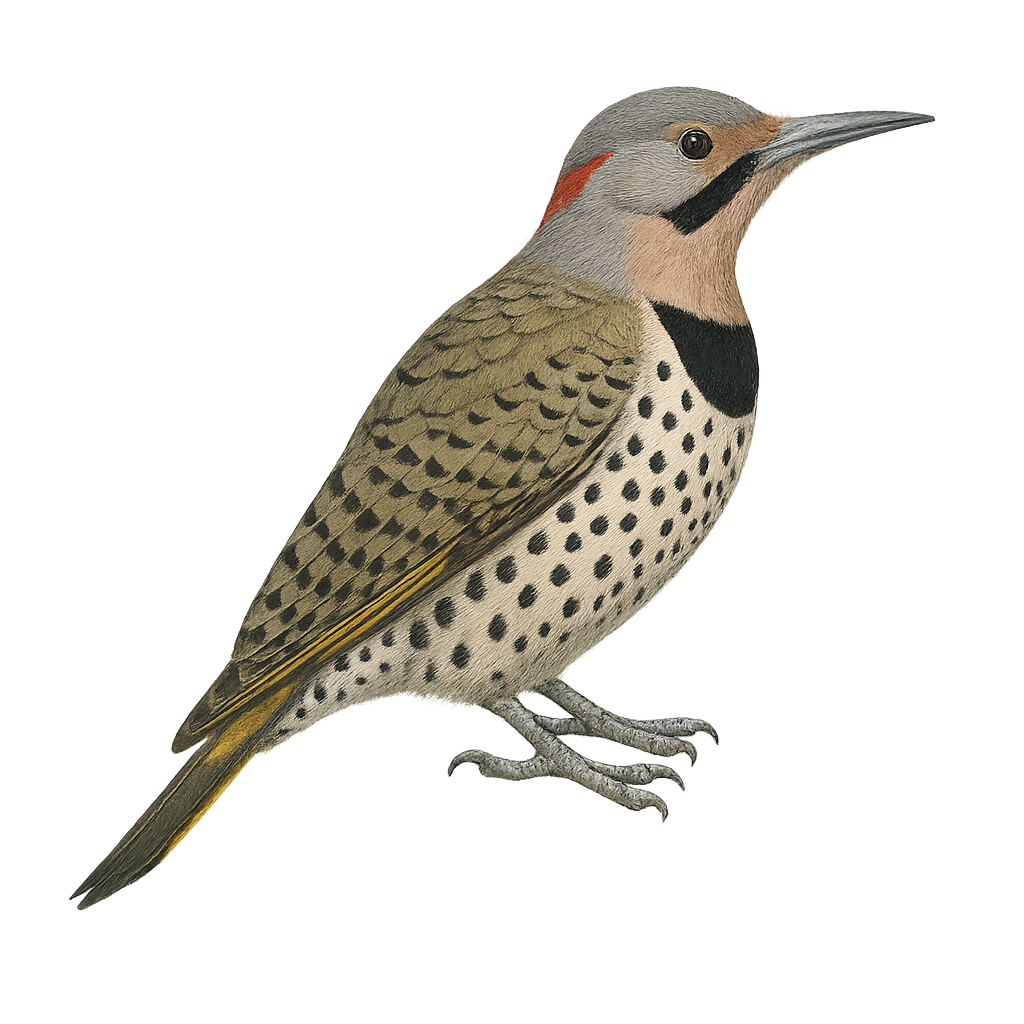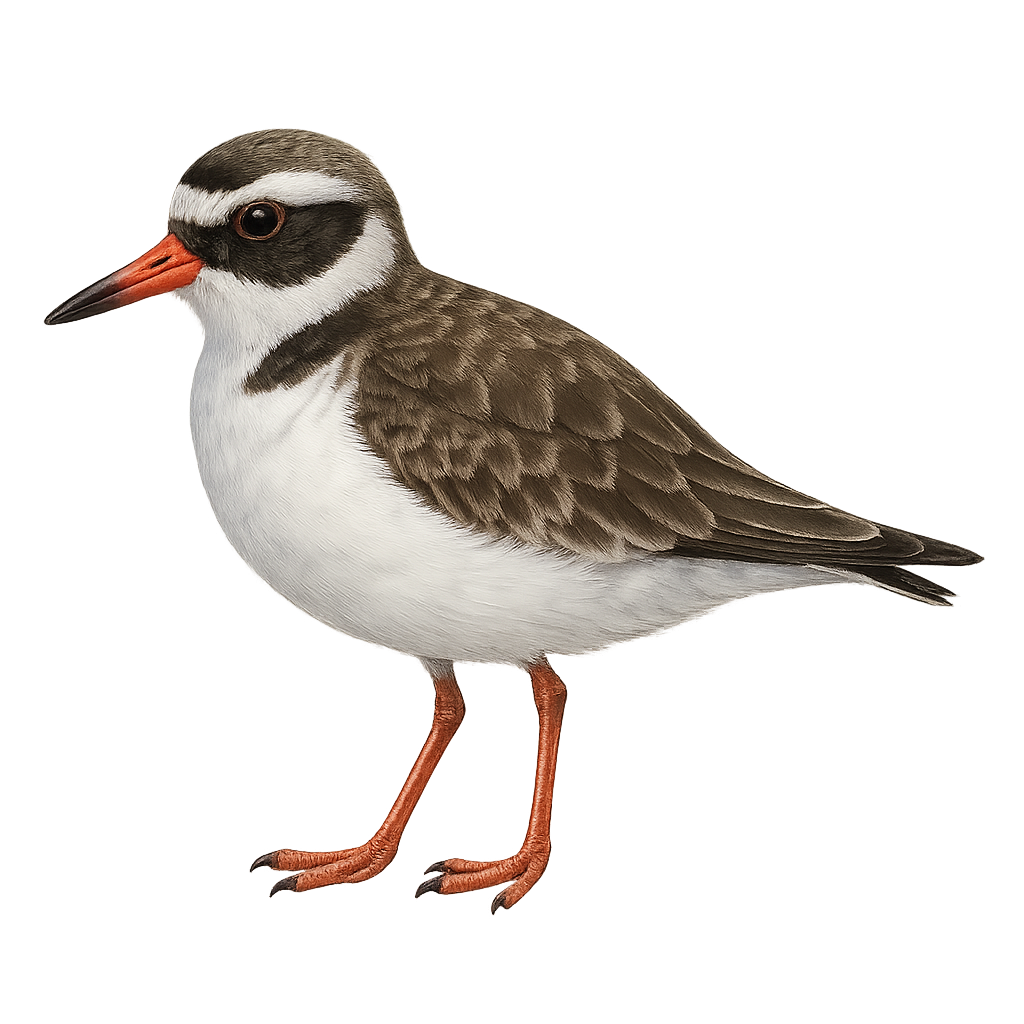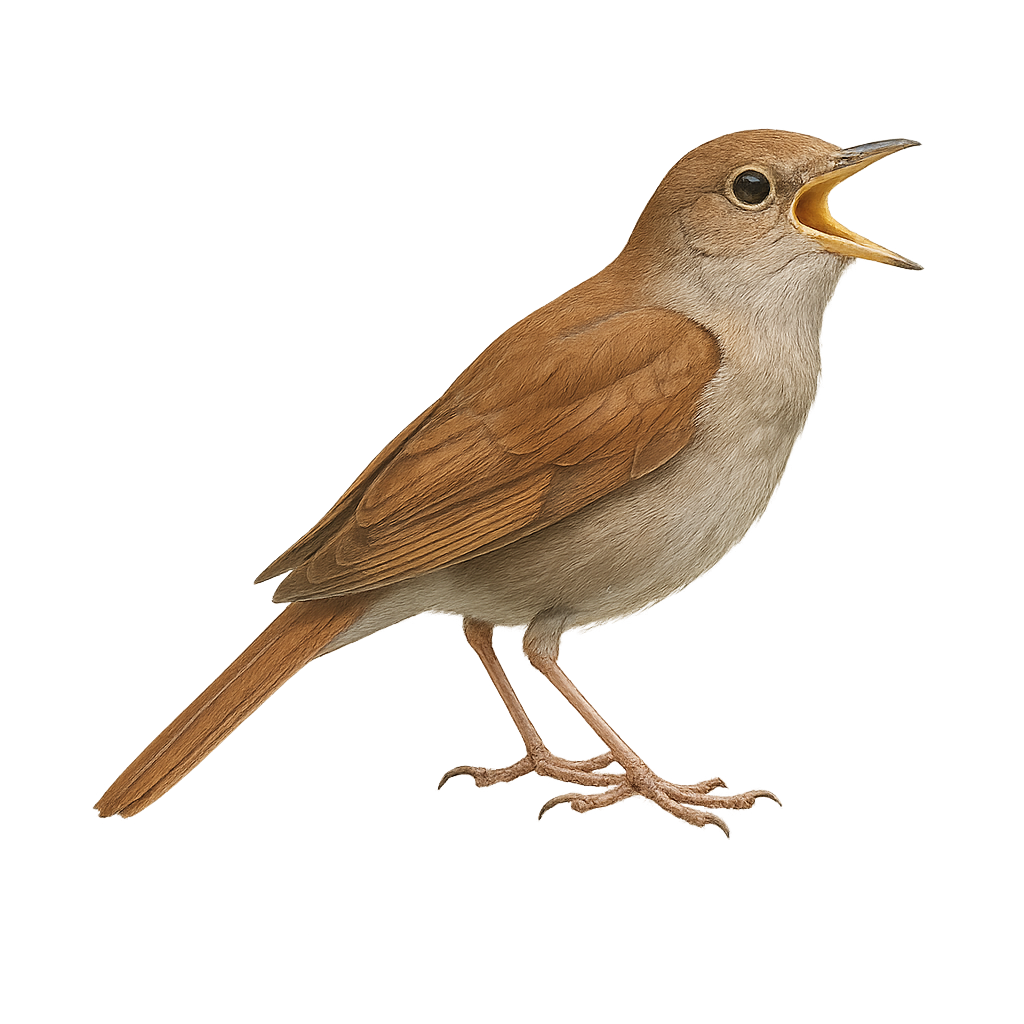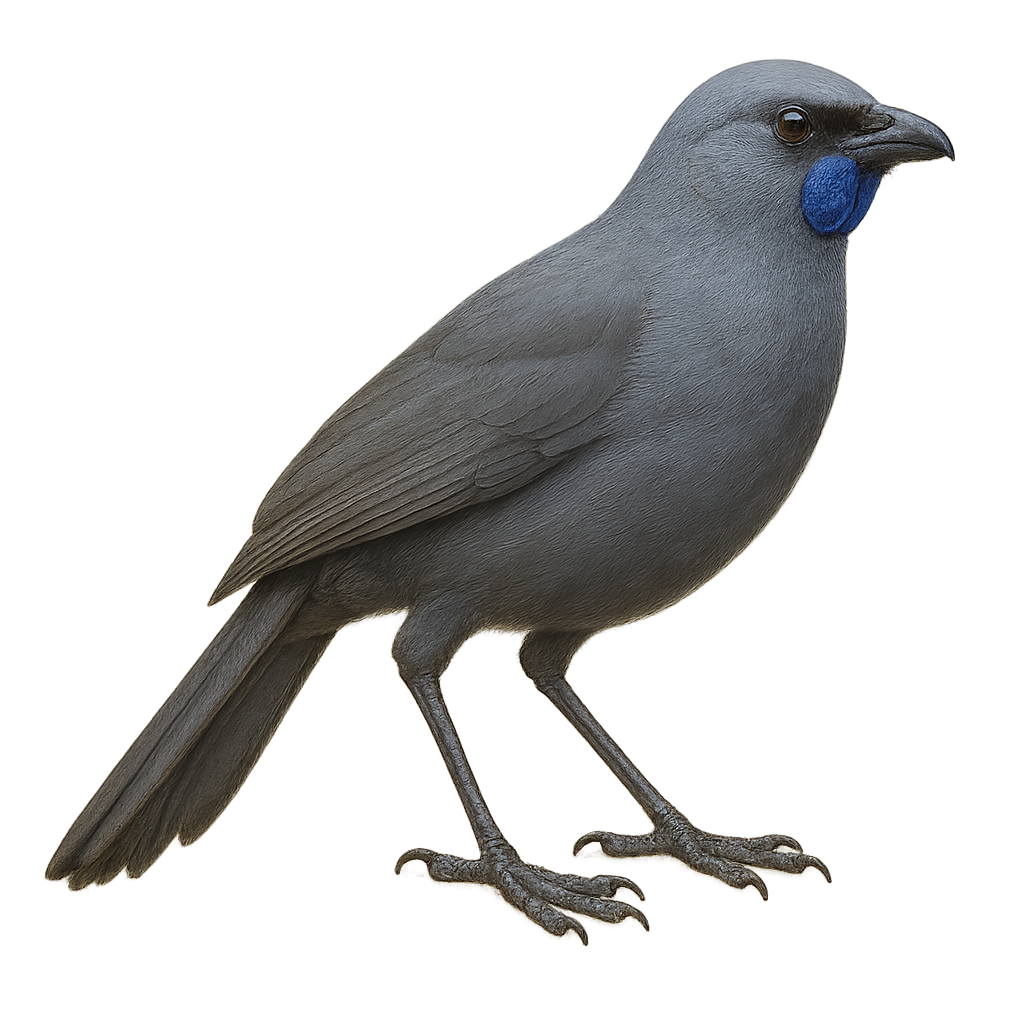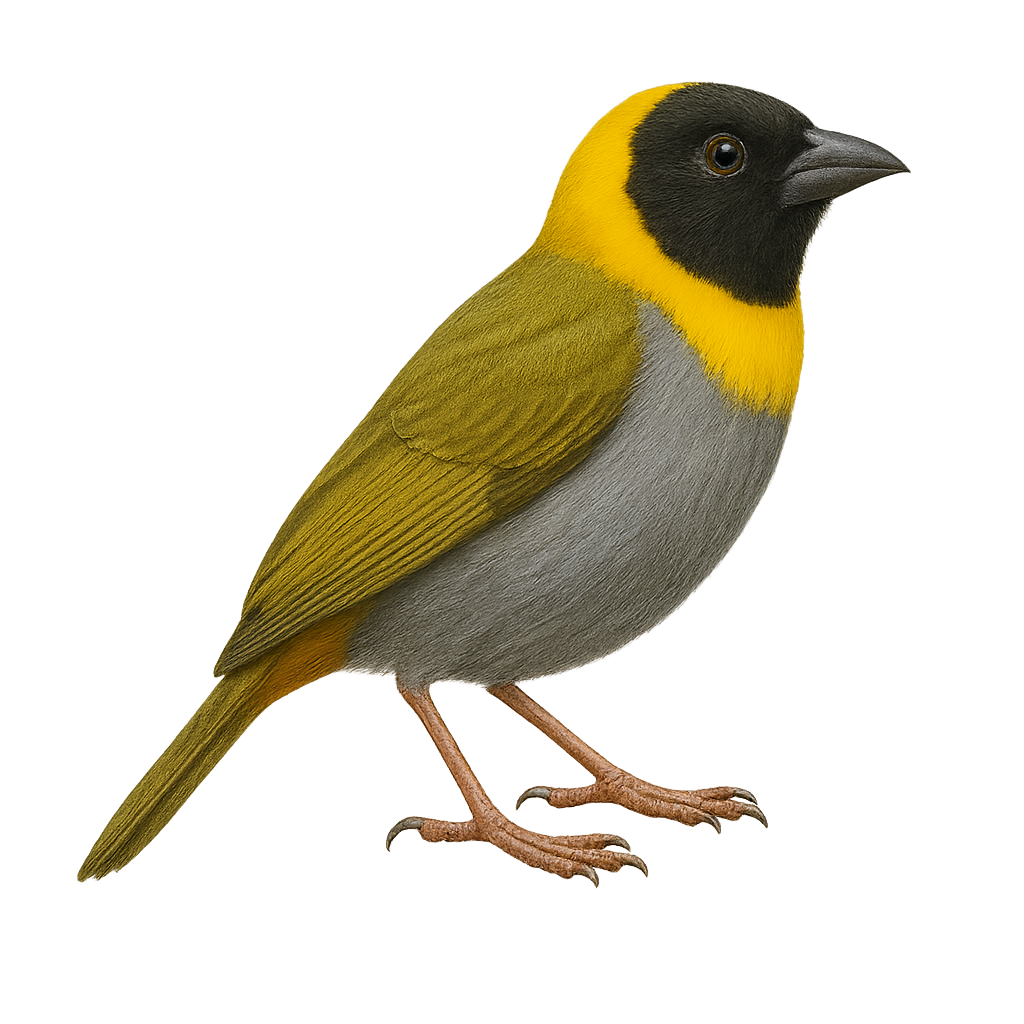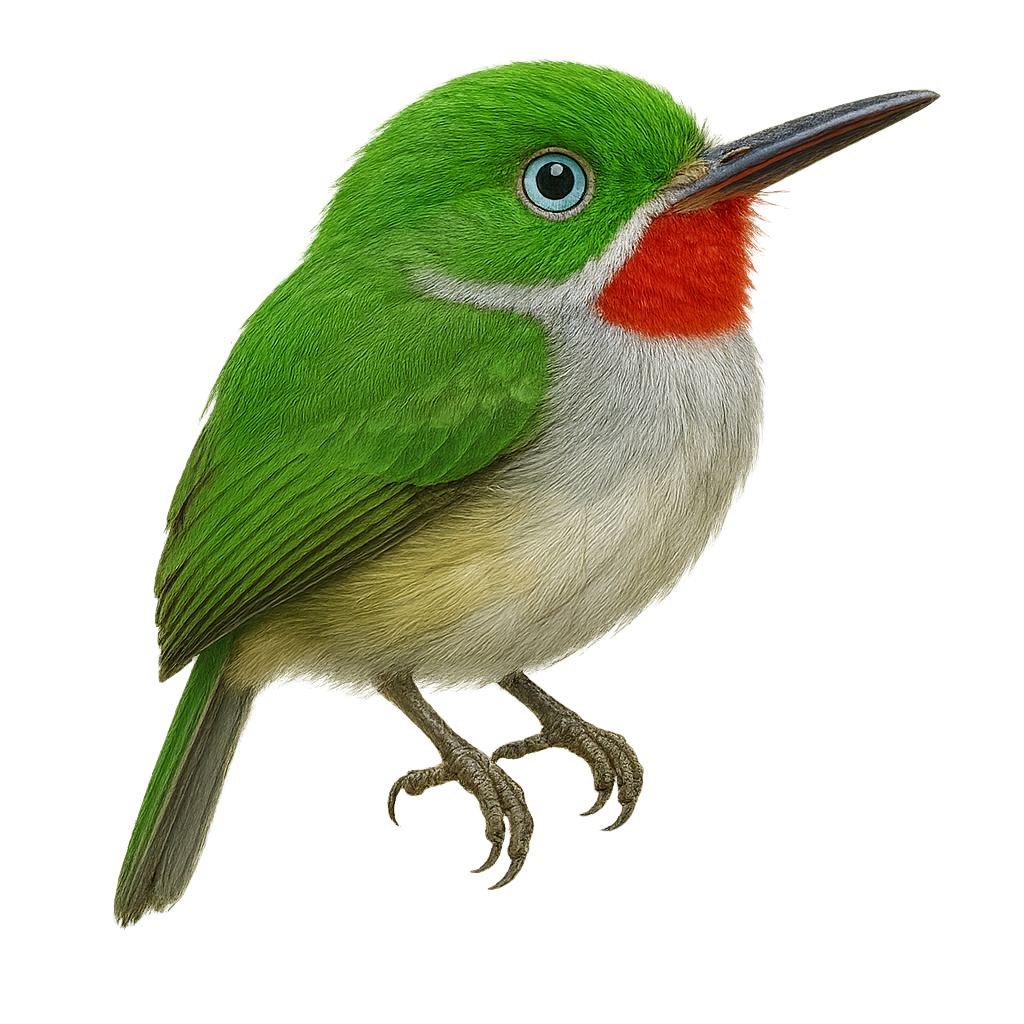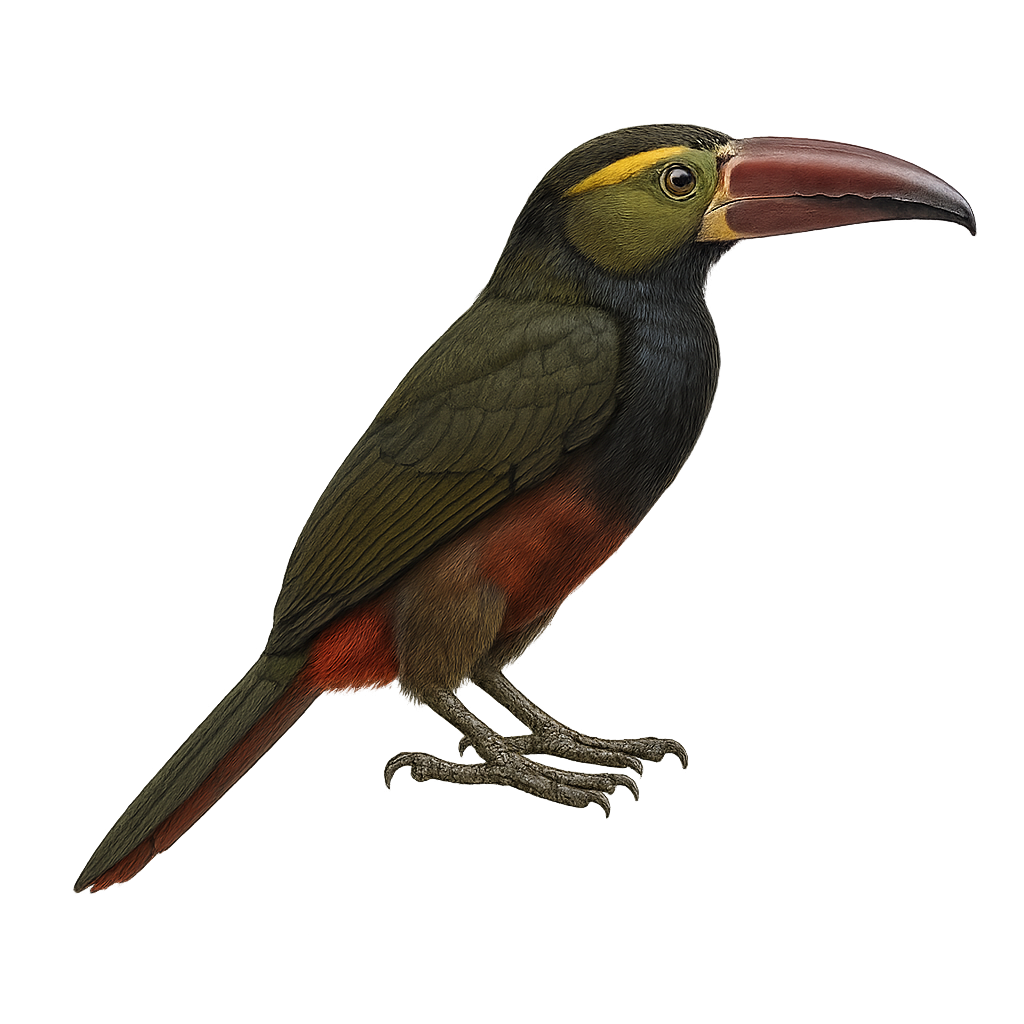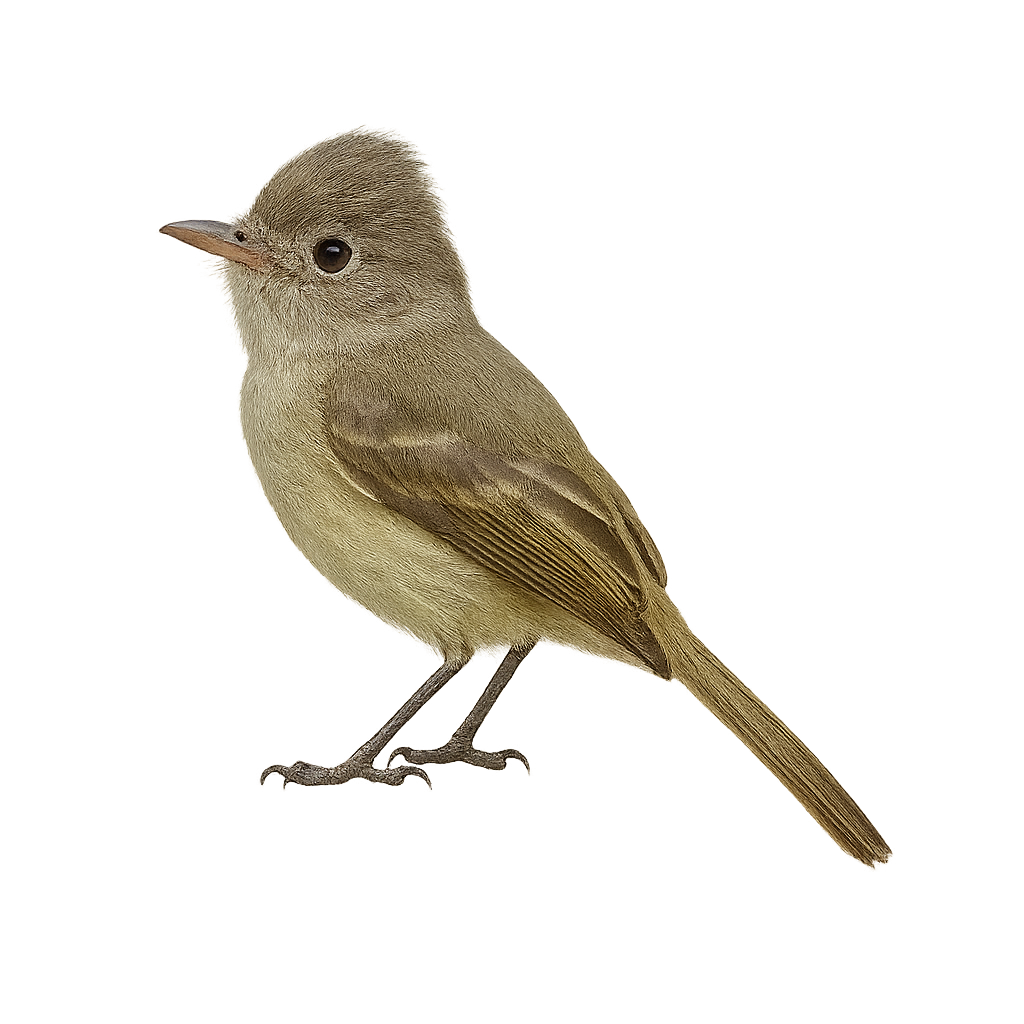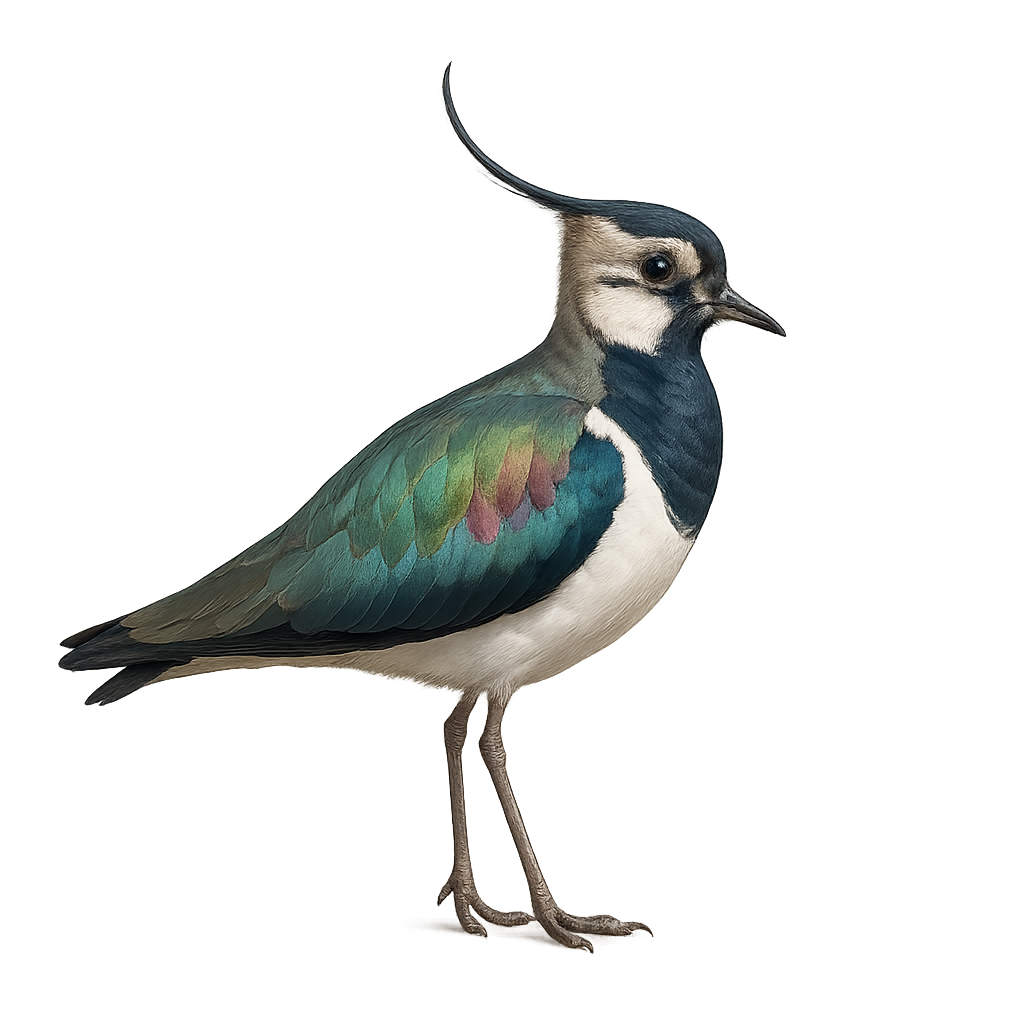The Night Parrot, or Pezoporus occidentalis, is a rare and elusive bird from Australia, primarily nocturnal and difficult to spot. It is medium-sized, with green plumage speckled with yellow and black, allowing it to blend seamlessly into its arid habitat. Its short, sturdy beak is well-suited for its diet of seeds and grasses. Known for its melodious yet discreet call, this bird's song echoes across the desert plains. It is often solitary or found in small groups, moving mainly on the ground and using its wings for short flights. Its rarity and secretive behavior make it a fascinating subject of study for ornithologists and nature enthusiasts.
The Northern Saw-whet Owl, Aegolius acadicus, is a small owl in the Strigidae family. It measures about 18 to 21 cm in length with a wingspan of 42 to 56 cm. Its plumage is brown with white spots on the belly and a pale face surrounded by a distinctive facial disk. Primarily nocturnal, it feeds on small mammals, birds, and insects. It inhabits coniferous and mixed forests across North America, from southern Canada to the northern United States. Though elusive and hard to spot, its soft, repetitive call is often heard during the breeding season.
The Nuttall's Woodpecker is a medium-sized bird, measuring about 18 to 21 cm in length. It is primarily black and white, with distinctive stripes on its back and wings. Males are marked by a red patch on the nape, which is absent in females. This woodpecker is mainly found in oak forests of California and northern Mexico. It primarily feeds on insects dislodged from tree bark, but also consumes fruits and seeds. Its call is a rapid trill, and it often drums on trunks to mark its territory. Although relatively common, it is sensitive to habitat loss due to urbanization.
The Northern Flicker, or Colaptes auratus, is a captivating bird from the Picidae family. It is distinguished by its striking plumage, blending shades of brown, black, and gold, with red or yellow markings depending on the subspecies. This flicker is widespread across North America, inhabiting various environments from forests to urban parks. Known for its unusual terrestrial behavior for a woodpecker, it is often seen pecking the ground in search of ants and other insects. The Northern Flicker is also famous for its loud drumming, used to mark territory and attract a mate. Although generally tolerant of human presence, it remains vigilant and may quickly fly away if threatened.
The New Zealand Dotterel is an endemic bird of New Zealand, recognizable by its medium size and light brown plumage with a paler breast. It primarily inhabits sandy beaches and estuaries, where it feeds on small invertebrates. This bird is often seen in small groups, especially outside the breeding season. The New Zealand Dotterel is a threatened species, mainly due to predation by introduced species and habitat loss. Conservation efforts are underway to protect its nesting sites and reduce threats to its survival.
The nightingale is a small passerine bird known for its melodious and powerful song, found primarily in woodlands, thickets, and gardens across Europe and Asia. It is easily recognized by its brown-russet plumage and light belly, as well as its relatively short beak. The nightingale is especially famous for its song, which is particularly vibrant and long, especially during the breeding season. It prefers dense and well-hidden habitats to feed on insects and worms.
The Callaeas wilsoni, commonly known as the North Island Kōkako, is an endemic bird of New Zealand. It is easily recognizable by its bluish-grey plumage and bright blue facial wattles. This forest bird is known for its melodious and complex song, often compared to a flute. It primarily inhabits the wet and dense forests of the North Island, where it feeds on fruits, insects, and leaves. Although its flight is weak, it is an excellent climber, using its strong legs to move between branches. Unfortunately, the North Island Kōkako is threatened by habitat loss and predation by introduced species, leading to a significant decline in its population.
The Nelicourvi Weaver is an endemic bird of Madagascar, recognizable by its bright yellow plumage and distinctive black patterns on its head and back. It primarily inhabits the island's humid forests and wooded areas. This bird is known for its complex nests, often suspended from tree branches. The male builds the nest to attract a female, and if unsuccessful, he destroys it to build another. The Nelicourvi Weaver is a sociable bird, often seen in small groups. It primarily feeds on insects and seeds. Although its habitat is threatened by deforestation, it is currently classified as "least concern" by the IUCN.
The Narrow-billed Tody, or Todus angustirostris, is a small, colorful bird endemic to the island of Hispaniola, shared by Haiti and the Dominican Republic. It is distinguished by its bright green plumage, vivid red throat, and pale yellow belly. Measuring about 11 cm in length, it has a thin, slightly curved beak, adapted to its diet mainly consisting of insects. This tody is often seen in humid forests and wooded areas, where it moves nimbly in search of food. Although it is relatively tolerant, it remains discreet and blends easily into its environment thanks to its plumage.
The Natterer's Toucanet, or Selenidera nattereri, is a colorful and fascinating bird primarily inhabiting the humid tropical forests of South America. This small toucan is distinguished by its vibrant plumage, a mix of green, blue, and yellow, with a distinctive and colorful beak. It is often seen in pairs or small groups, feeding mainly on fruits, but also on insects and small vertebrates. Its song is a mix of high-pitched calls and melodious whistles that resonate through the dense canopy. Although its habitat is threatened by deforestation, the Natterer's Toucanet remains relatively common in some areas due to its adaptability.
The Northern Beardless Tyrannulet is a small bird from the Tyrannidae family, found mainly in arid and semi-arid regions from the southwestern United States to northern Mexico. It is characterized by its modest size, gray-olive plumage, and lack of a beard, hence its name. This passerine is often seen in low bushes and trees, where it primarily feeds on insects. Its song is a soft, repetitive trill, often heard before the bird is seen. Although discreet, it is quite tolerant of human presence, making it easier to observe.
The Northern Lapwing is a medium-sized bird found primarily in grasslands, fields, and wetlands across Europe, Western Asia, and the Middle East. It typically measures about 28 to 32 cm in length and weighs between 150 and 200 g. Its plumage is primarily black and white, with a distinctive crest on its head and a white belly. The Northern Lapwing is a ground-dwelling bird that primarily feeds on insects, worms, and other small invertebrates found in the soil. It is also known for its ground nesting behaviors, often in colonies. While its population remains stable in some areas, the Northern Lapwing is threatened by habitat loss due to intensive agriculture and land degradation.


